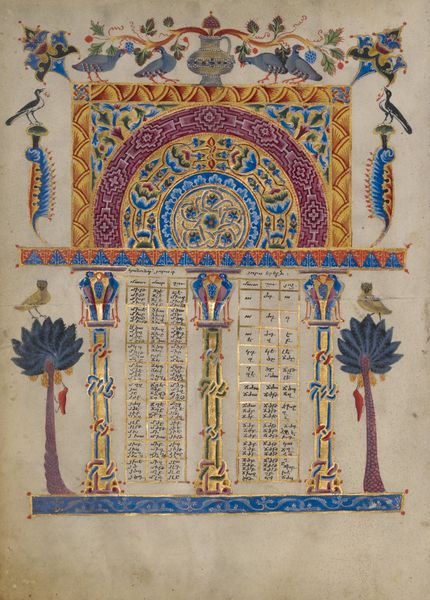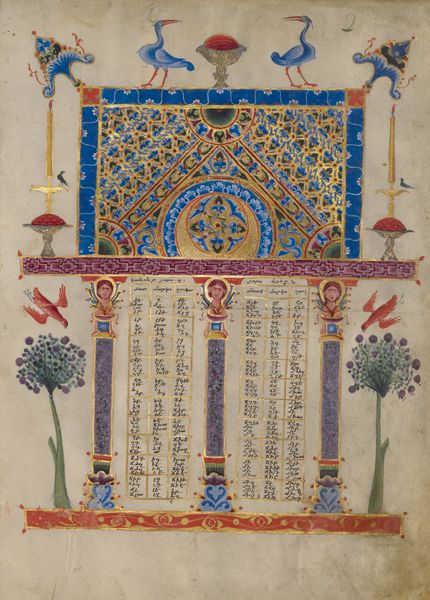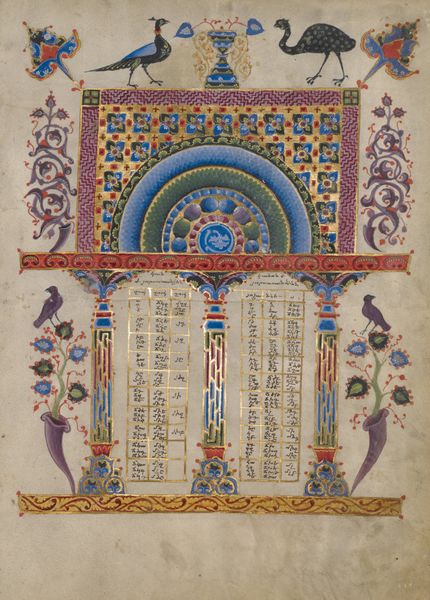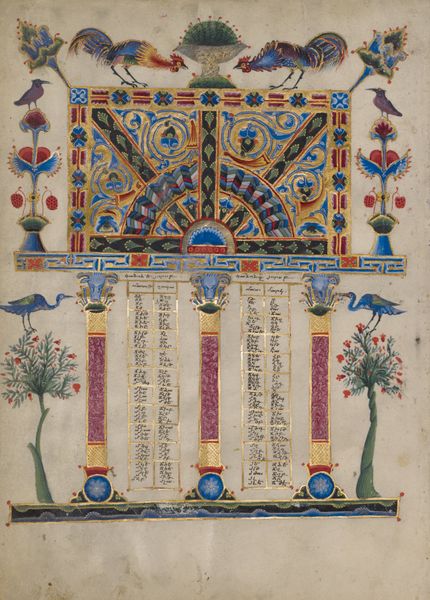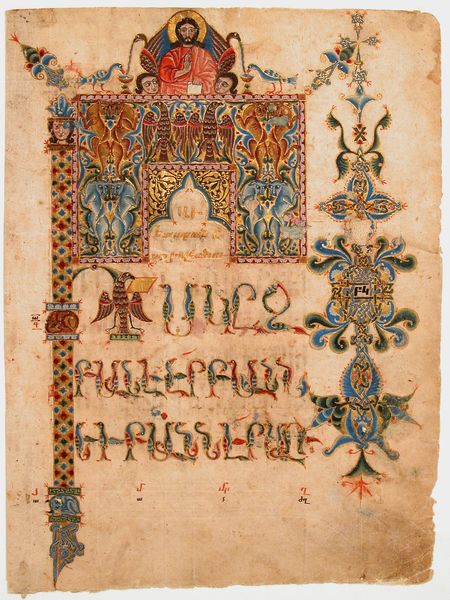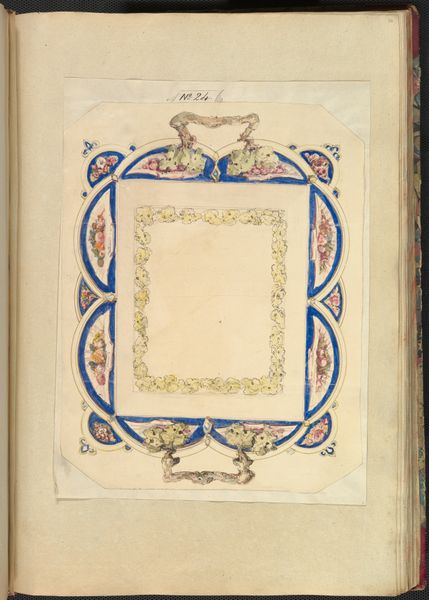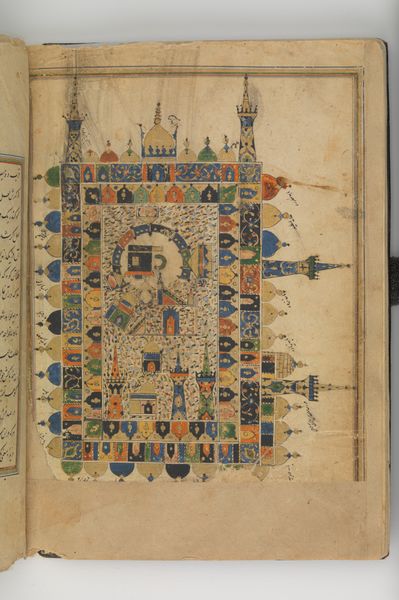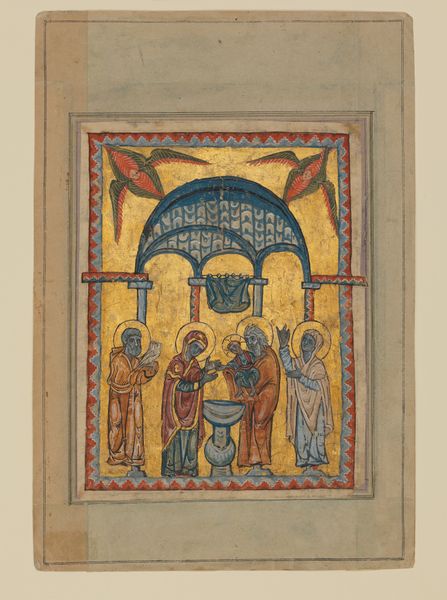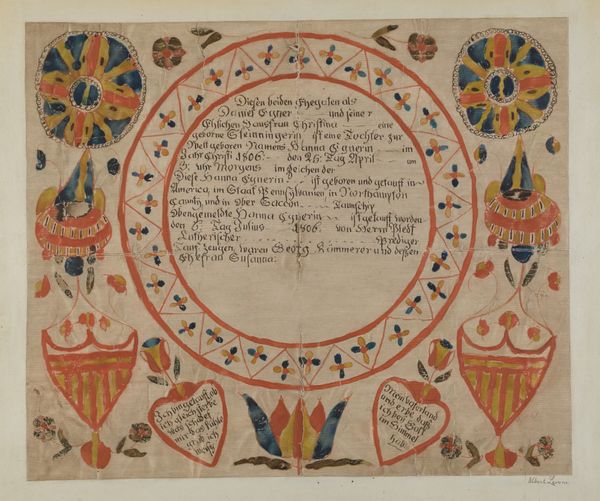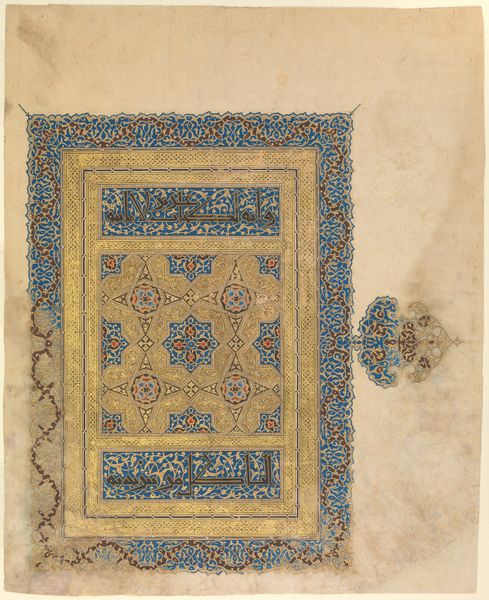
paper, ink
#
byzantine-art
#
medieval
#
water colours
#
paper
#
ink
#
coloured pencil
#
geometric
#
miniature
#
calligraphy
Copyright: Public domain
This Canon Table page was illuminated by Toros Roslin, a master of Armenian manuscript illumination, sometime between 1210 and 1270. Canon Tables appear at the beginning of Gospel Books to show where the same stories occur in each of the four Gospels. The geometric and floral motifs, as well as the birds and plants are typical of Armenian art and, like much religious art, served to elevate the text they adorn and the spiritual experience of its readers. But the art of manuscript illumination was not only an act of piety, it also played a key role in shaping Armenian cultural identity. During the medieval period, Armenia experienced periods of political instability and foreign rule. Religious institutions, such as the church and its scriptoria, were key sites for preserving and promoting Armenian language, history, and cultural traditions. Roslin’s canon tables therefore can be understood as visual assertions of Armenian cultural and religious identity during a turbulent period. Studying such manuscripts involves understanding both artistic traditions, religious history, and social and political context.
Comments
No comments
Be the first to comment and join the conversation on the ultimate creative platform.
